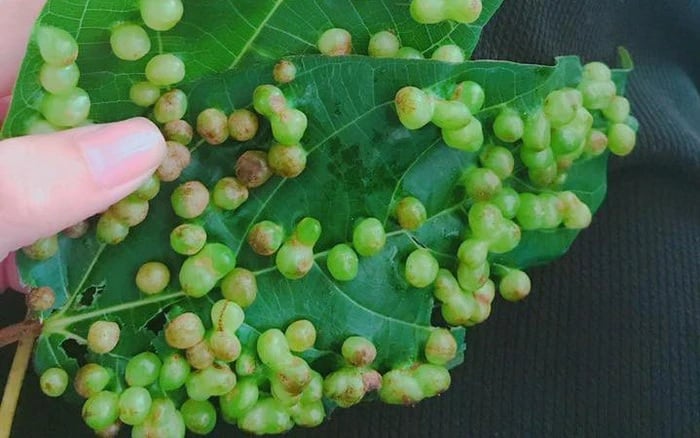The sung tree is a familiar sight in Vietnamese culture, often making an appearance on ceremonial trays and family meals as a side vegetable.
What are the bumps on sung tree leaves?
Upon closer inspection, you may notice small bumps on some sung tree leaves, usually found on the upper surface. These bumps can be round or slightly elongated and may appear singly or in clusters. This phenomenon is not uncommon, and most sung trees exhibit these bumps to some degree.
Some people mistakenly believe that these bumps indicate a disease or the presence of toxins, attributing them to insect, fungal, or parasitic infections. Others assume they are caused by bacterial or viral infiltration and therefore insist on removing leaves with bumps to avoid any potential health risks.
However, according to agricultural experts and experienced farmers, these bumps are not a sign of any pathological condition or leaf damage.
The truth about the bumps – they are perfectly safe to consume
In reality, these bumps are known as galls—a natural reaction of the tree to stimulation by insects (such as bees, ants, or small flies) or some other biological factor. When stimulated, the leaf tissue of the sung tree grows abnormally, forming these bumps as a self-protection mechanism.
Importantly, these galls are completely harmless to humans. Leaves with these bumps are entirely edible and do not contain any toxins or pose a risk of poisoning, contrary to popular belief. In fact, according to folk knowledge, leaves with galls tend to be meatier and have a nuttier flavor, making them an excellent accompaniment to dishes like fermented pork rolls, boiled meat, or patties…
When should you avoid consuming sung tree leaves?

-
Avoid older sung tree leaves that are dark green, rough, and tough as they may be difficult to digest and less palatable.
-
Do not consume leaves that are wilted, yellowed, or show signs of black spots or severe insect infestation.
-
Refrain from using leaves that have been treated with pesticides or insecticides unless the recommended waiting period has passed after application.
For safety, opt for young, clean sung tree leaves with a clear origin, and rinse them thoroughly with diluted salt water or plain water before consumption.
90% of the population misunderstands the bumps on sung tree leaves, attributing them to defects or harmfulness. In reality, these bumps are a natural response of the tree to its environment, and leaves with these bumps are perfectly safe for consumption when properly cleaned and stored.
So, the next time you spot these bumps, don’t be quick to discard the leaves. Understanding this natural phenomenon will help prevent waste and give you peace of mind during family meals.































